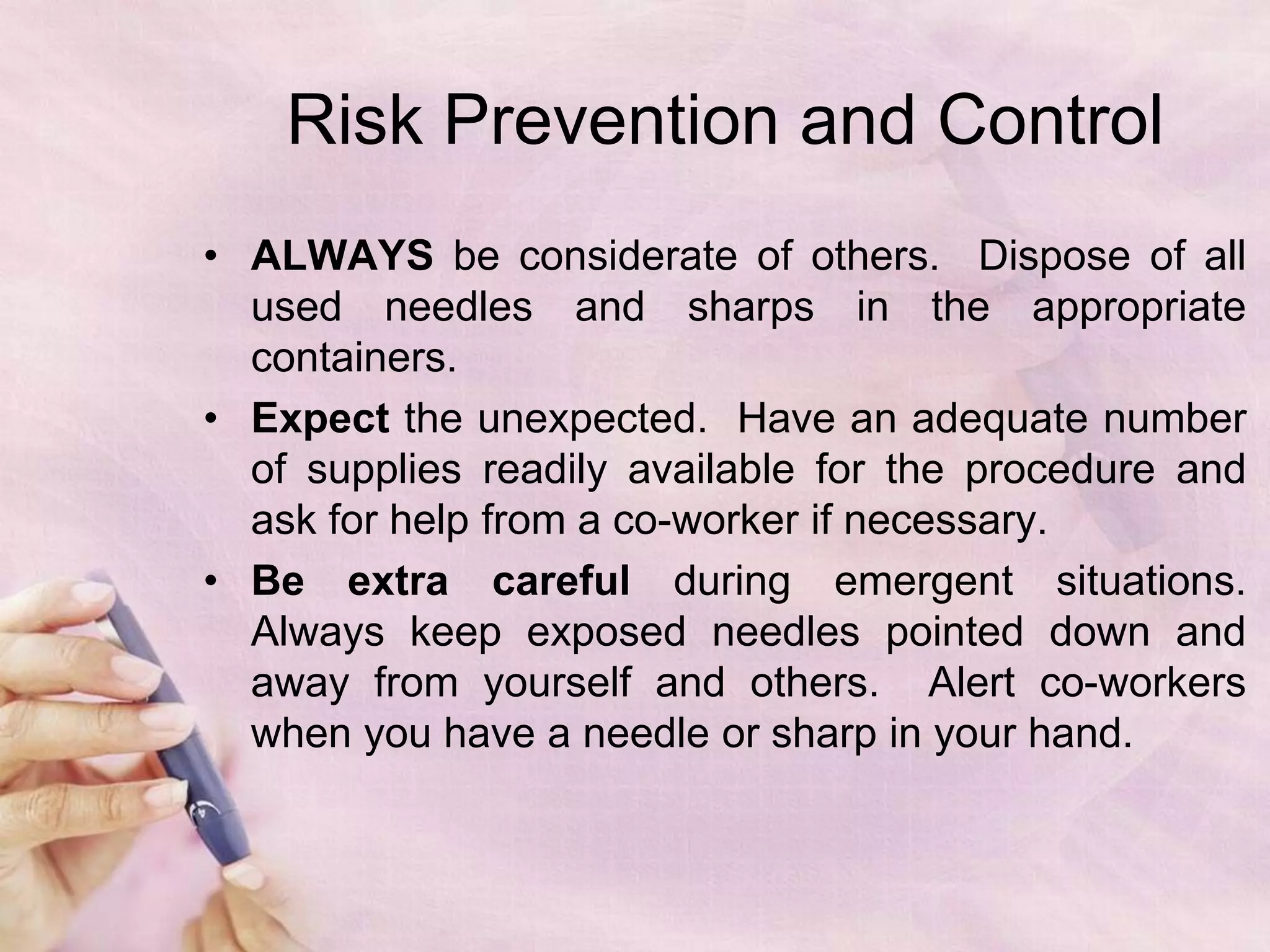Needle stick injuries pose a significant risk to healthcare workers. While policies and safety protocols have improved in recent decades, needle sticks remain a serious issue. A key part of addressing the problem involves implementing a risk management program that focuses on identifying risks, analyzing data on injuries, and implementing prevention and control strategies. Some important strategies for prevention include proper sharps disposal, safety engineering controls like safety containers, safe work practices, and education to promote a culture of safety. Reducing needle stick injuries requires an interdisciplinary approach and commitment across an entire organization.




























